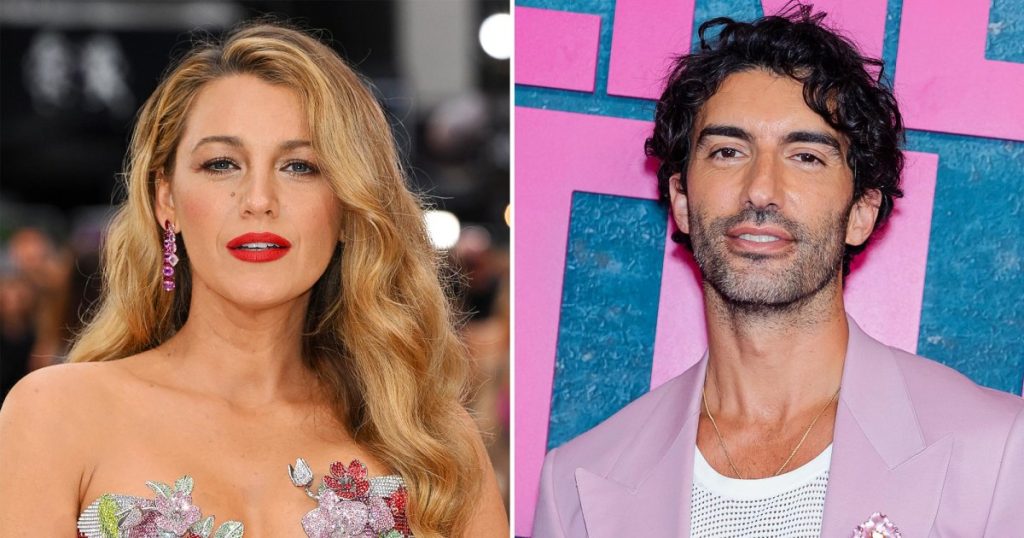The release of the film adaptation of Colleen Hoover’s bestselling novel, It Ends With Us, starring Blake Lively and Justin Baldoni, was overshadowed by rumors of an off-screen feud between the two leads. Speculation initially arose from online observations, including the fact that Lively, also a producer on the project, did not follow Baldoni or any other cast members on Instagram, despite actively promoting the film with other actors and Hoover herself. Conversely, Baldoni followed Lively on the platform. This social media dynamic, coupled with Baldoni’s absence from joint press events and the lack of group photos from the premiere, fueled the rumors of a strained relationship. The situation escalated when Lively disclosed that her husband, Ryan Reynolds, had contributed to a scene in the film and was later involved in its promotion, further amplifying the perception of distance between the two stars.
Adding another layer to the unfolding drama, reports emerged that Lively, known for her creative involvement in projects, had allegedly requested a separate cut of the film from editor Shane Reid, with whom she had previously collaborated. While it’s not unusual for filmmakers to explore different edits during post-production, this instance heightened the speculation of creative differences between Lively and Baldoni, who directed the film. However, sources confirmed that all parties ultimately agreed on the final cut, emphasizing that it represented the best version of the film. Despite the swirling rumors, Baldoni consistently praised Lively’s performance during the press tour and even suggested she direct the potential sequel, It Starts With Us.
The narrative took a dramatic turn in December 2024 when TMZ reported Lively had filed a lawsuit against Baldoni for sexual harassment and emotional distress. Baldoni’s attorney vehemently denied these allegations, labeling them as "completely false, outrageous, and intentionally salacious." This legal action significantly escalated the conflict between the two stars, transforming online speculation into a formal legal battle. The accusations and denials created a stark divide in the public perception of the situation, with supporters lining up behind both Lively and Baldoni. Lively’s representatives did not immediately comment on the lawsuit.
The legal battle intensified further with a $250 million lawsuit filed against The New York Times by ten plaintiffs, including Baldoni, his publicists, and the producers of It Ends With Us. The lawsuit centered on the newspaper’s reporting of Lively’s harassment claims, alleging that the publication had engaged in a “strategic and manipulative” smear campaign against Baldoni, selectively presenting information and omitting crucial details. The plaintiffs argued that Lively had orchestrated a campaign to damage Baldoni’s reputation, rather than being the victim of harassment herself. The New York Times stood by its reporting, vowing to “vigorously defend” against the lawsuit, while Lively’s attorneys dismissed the suit as based on an “obviously false premise." Baldoni’s attorney reiterated the denial of any wrongdoing and accused Lively and her team of orchestrating the "vicious smear campaign."
Further complicating the situation, Lively filed another lawsuit against Baldoni in New York, mirroring the earlier claims filed in California. This dual legal strategy intensified the pressure on Baldoni, suggesting a determined effort by Lively to pursue the harassment claims. The parallel lawsuits raised questions about legal strategy and jurisdiction, adding another layer of complexity to an already convoluted narrative. The conflicting lawsuits and public statements created a highly polarized environment, making it difficult to discern the truth amidst the accusations and denials.
The saga surrounding It Ends With Us evolved from initial whispers of on-set tension to explosive legal battles, highlighting the complex interplay of public image, personal relationships, and legal maneuvering in the entertainment industry. The starkly contrasting narratives presented by Lively and Baldoni, coupled with the involvement of major media outlets and legal teams, created a media frenzy. The case underscores the challenges of separating fact from fiction in high-profile disputes, especially when accusations of such a serious nature are involved. As the legal proceedings unfolded, the future of any potential sequel and the professional relationship between Lively and Baldoni remained uncertain, leaving a cloud of controversy hanging over the successful film adaptation.

